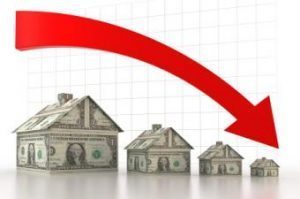 Pending home sales activity stayed high in March. But the nation’s tight inventory supply slowed momentum in most parts of the country.
Pending home sales activity stayed high in March. But the nation’s tight inventory supply slowed momentum in most parts of the country.
The latest Pending Home Sales Index by the National Association of Realtors showed that contract signings declined 0.8 percent in March, though it increased by the same amount compared to a year ago. The index finished the month at 111.4; in February it was 112.3 in February.
Lawrence Yun, NAR chief economist, says sparse inventory levels caused a pullback in pending sales in March, but activity was still strong enough to consider March the third-best month in the past 12.
“Home shoppers are coming out in droves this spring and competing with each other for the meager amount of listings in the affordable price range,” Yun said. “In most areas, the lower the price of a home for sale, the more competition there is for it. That’s the reason why first-time buyers have yet to make up a larger share of the market this year, despite there being more sales overall.”
Yun said he is worried that painfully low supply levels this spring could exacerbate price growth in the coming months. Homes in March came off the market at a near-record pace, often with multiple offers. This, according to NAR, led to 42 percent of homes being sold at or above list price last month. That’s the second-highest amount since 2012.
“Sellers are in the driver’s seat this spring as the intense competition for the few homes for sale is forcing many buyers to be aggressive in their offers,” Yun said. “Buyers are showing resiliency given the challenging conditions. However, at some point‒‒and the sooner the better‒‒price growth must ease to a healthier rate. Otherwise sales could slow if affordability conditions worsen.”
Yun expects 5.64 million existing-home sales this year, which would be an increase of 3.5 percent from 2016. At the same time, the national median existing-home price this year is expected to rise around 5 percent. Both of these numbers would echo 2016’s final tallies, when existing sales increased 3.8 percent and prices rose 5.1 percent.
The one region where pending sales did increase in March was the South, which finished the month up 1.2 percent. Sales in the South were also up 4 percent from a year ago. But in all other regions, month-to-month pending sales dropped in March,. The Northeast and West saw drops of 2.9 percent. The difference is that while activity in the Northeast was up 1.8 percent compared to last March, activity in the West was down 2.7 percent year-to-year.
In the Midwest the index declined 1.2 percent to 109.6 in March, 2.4 percent lower than a year earlier.

 theMReport.com Your trusted source for mortgage banking news
theMReport.com Your trusted source for mortgage banking news








